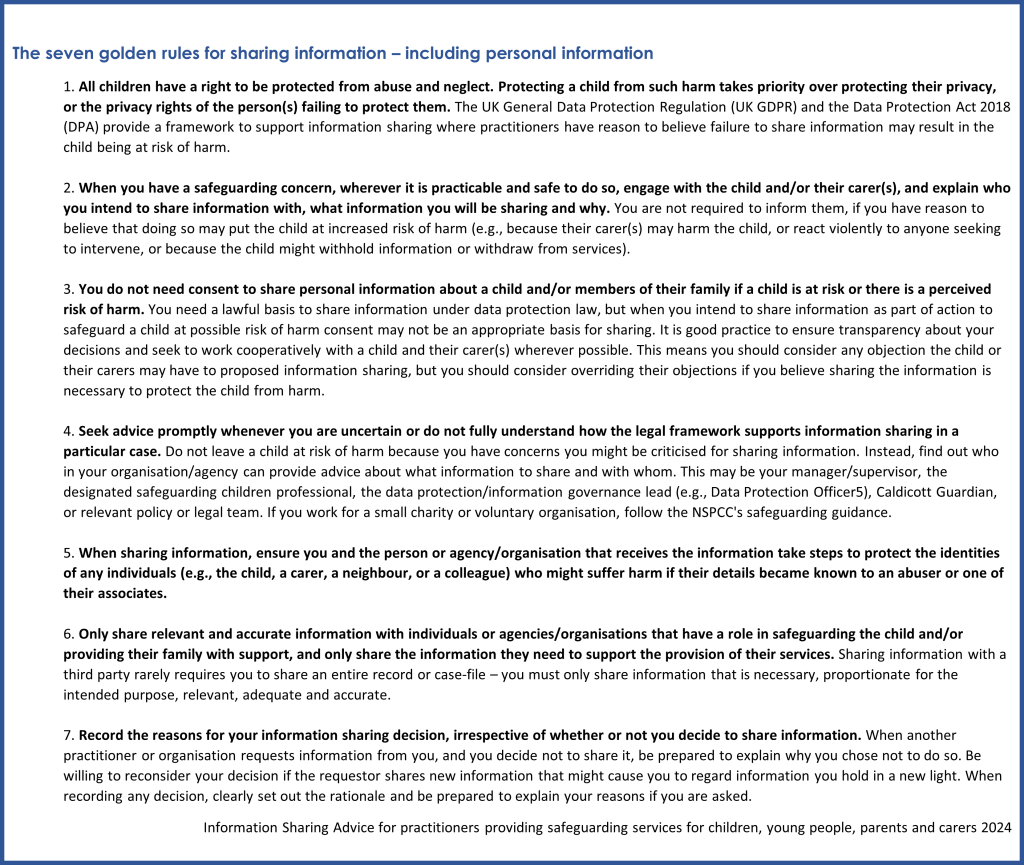Information Sharing
No single practitioner can have a full picture of a child’s needs and circumstances so effective sharing of information between practitioners, local organisations and agencies is essential for early identification of need, assessment, and service provision to keep children safe. Rapid reviews and child safeguarding practice reviews have highlighted that missed opportunities to record, understand the significance of, and share information in a timely manner can have severe consequences for children. Practitioners should be proactive in sharing information as early as possible to help identify, assess, and respond to risks or concerns about the safety and welfare of children.
Working Together 2023
HM Government advice outlines the importance of sharing information about children, young people and their families in order to safeguard children in its latest report by the Department for Education in its ‘Information Sharing Advice for practitioners providing safeguarding services for children, young people, parents and carers’. Read the full report here
Staffordshire Safeguarding Children Board Information Sharing Agreement
Staffordshire Safeguarding Partners information sharing agreement covers the sharing of personal and special category data about children to ensure effective systems are in place to protect children from abuse and to prevent impairment to children’s health and development.
SSCB Information Sharing Agreement
The seven golden rules of Information Sharing

Information Commissioner Office Guidance (ICO)
The ICO 10 step guide on data protection considerations when sharing personal information for child safeguarding purposes. It aims to help you feel confident about sharing information when you need to safeguard a child or young person at risk of harm.
It does not tell you how to safeguard children and young people, but it does give you practical advice on data protection as part of the safeguarding process. The ICO’s role is as the regulator of information rights, not of safeguarding practices.
Find out more here
